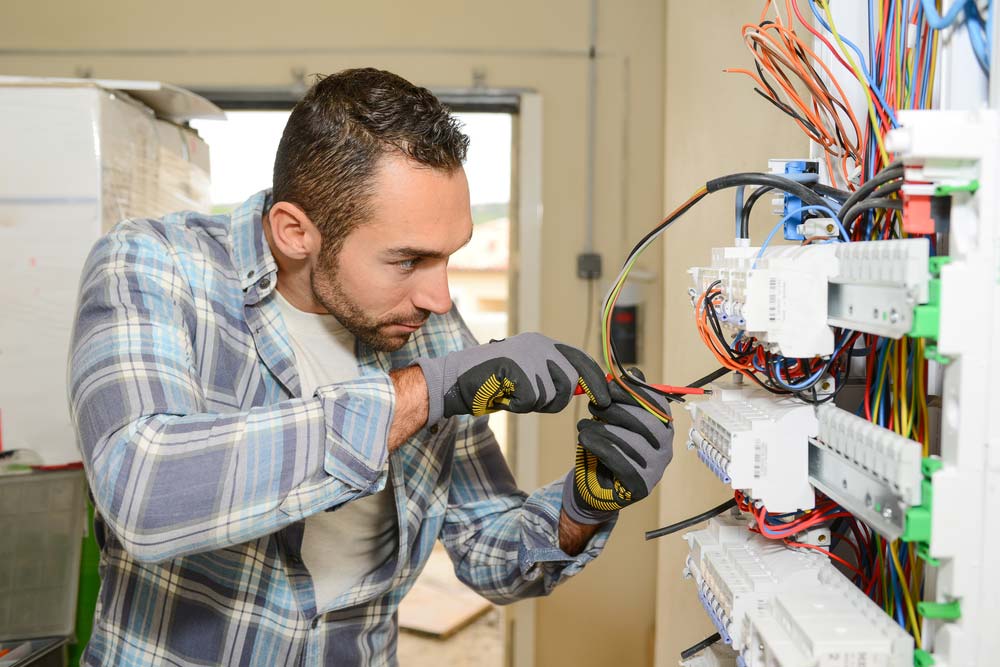Best Surge Protection Setup for Rentals: Panels vs Strips

If you manage apartments or an HOA, the right surge protector strategy can save appliances, HVAC boards, access systems—and your weekend. Here’s the fast answer: it’s not panels or strips. The best setup is a two-layer defense: a panel-mounted SPD for the whole unit/building plus a few point-of-use surge strips for sensitive electronics.
What actually works (the fast answer)
Use both layers:
- Service/Panel SPD (Type 1/2)
- Installed by a licensed electrician at the main/service or subpanels.
- Knocks down big, ugly surges before they hit circuits feeding HVAC, elevators, gate motors, fridges, laundry, etc.
- Point-of-use surge protector strips
- Tenants/office use at TVs, routers, workstation gear, access servers.
- Catches what’s left (smaller spikes, local noise).
Why both? Panel devices protect the building; strips protect the electronics. One without the other = gaps.What Are SB 326, SB 721, and Section 604?
Panels vs. strips (pros, cons, costs you can plan for)
Panel-mounted SPD (Type 1/2)
Pros
- Whole-home/whole-unit protection with one device per panel
- Shields large loads (HVAC, appliances, pumps, gates) tenants keep breaking
- Clean, set-and-forget with status light; can add remote alarm contact
Cons
- Requires a licensed electrician; make room in panel, short leads to breaker
- Up-front cost per panel (device + labor) in the low hundreds
- Replace after end-of-life or major hit (watch the indicator)
Spec tips (keep it simple)
- UL 1449 listed, Type 1 or 2, L-L/L-N/L-G modes
- Shortest possible lead length to reduce let-through
- Clear status indicator (and label the panel with install date)
Surge protector strips (point-of-use)
Pros
- Low cost per outlet; easy tenant education
- Good for TVs, modems/routers, office PCs, access control gear
Cons
- Wear out silently; require replacement policy
- Don’t protect equipment on other circuits (e.g., HVAC board)
- Marketing “joules” vary; look for UL 1449 and a protection OK light
Portfolio policy tip: Add a move-in handout that recommends a UL-listed surge protector for tenant electronics and replace every 3–5 years or if the indicator goes off.
Portfolio playbook for apartment/HOA owners (California-savvy)
- Prioritize your panels
- Start with common area panels (elevators, gates, access, security, comm rooms).
- Add SPDs to unit subpanels during turnovers or major electrical work.
- Standardize the spec
- One or two vetted SPD models (UL 1449 Type 1/2) for consistent installs.
- Require electricians to use short leads, label the panel, and photo-document.
- For strips, require UL 1449, protection indicator, right-angle plug where space is tight.
- Document for insurance & ops
- Keep a log: panel name, SPD model, install date, photo, indicator status.
- Add SPDs to your reserve plan; budget replacements on a cycle or indicator failure.
- Include quick checks in your annual inspection walkthrough.
- Communicate with residents
- One-pager: what a surge protector does, where to use it, when to replace.
- Note that power strips ≠ surge protectors; they need the UL 1449 label.
For rentals and HOAs, the best surge protector setup is a two-layer defense. Put panel SPDs where the big damage starts, then use surge strips where the sensitive devices live. Standardize, document, and you’ll cut failures (and angry calls) dramatically without turning your site into a science project.
Contact DrBalcony for a professional inspection!
Ensure the safety of your balcony and living space with DrBalcony – We’re a Tech Engineering firm that specializes in California SB326 & SB721 balcony inspections. Over 4500+ completed projects in California.
Request A Free Estimate
Click To Call
